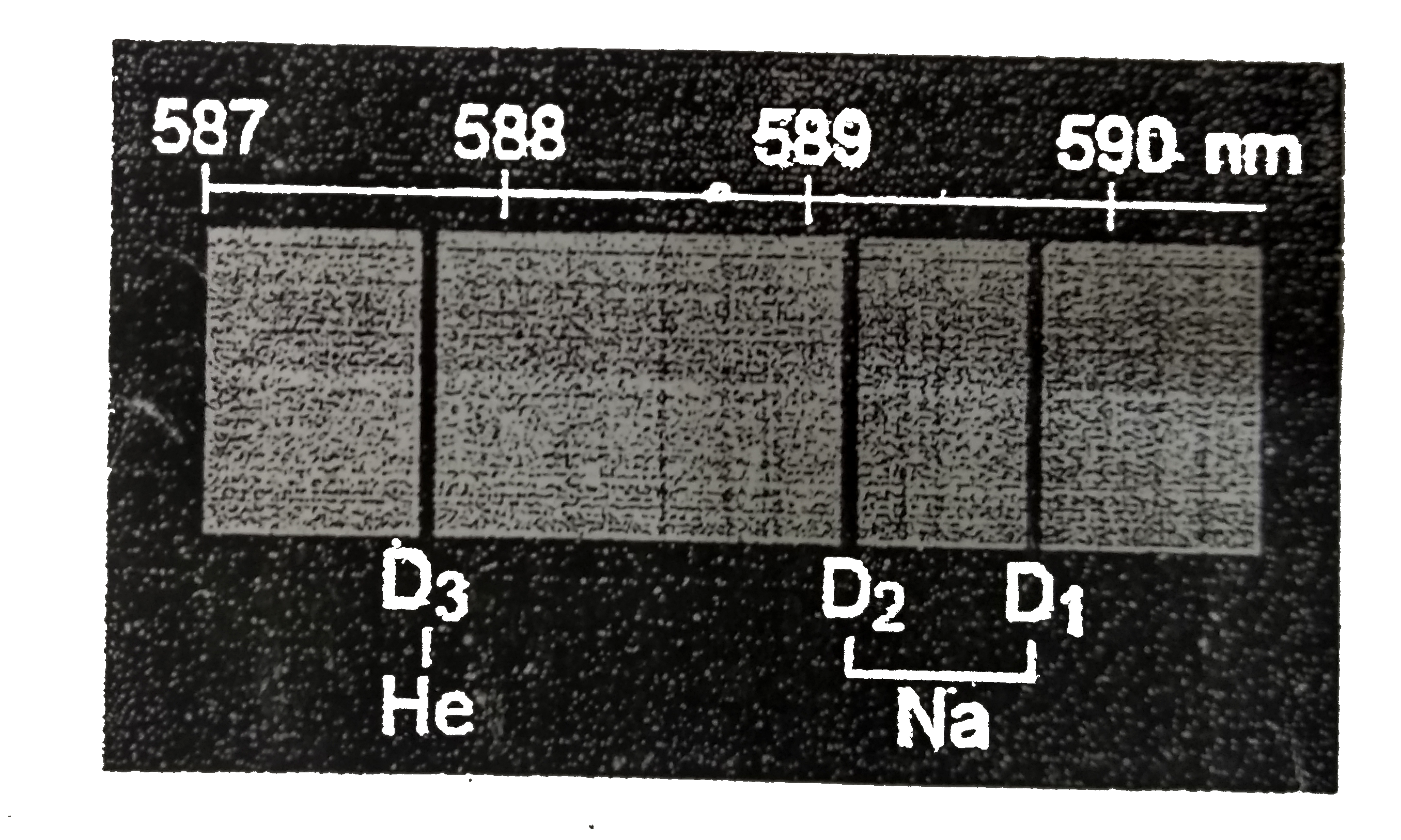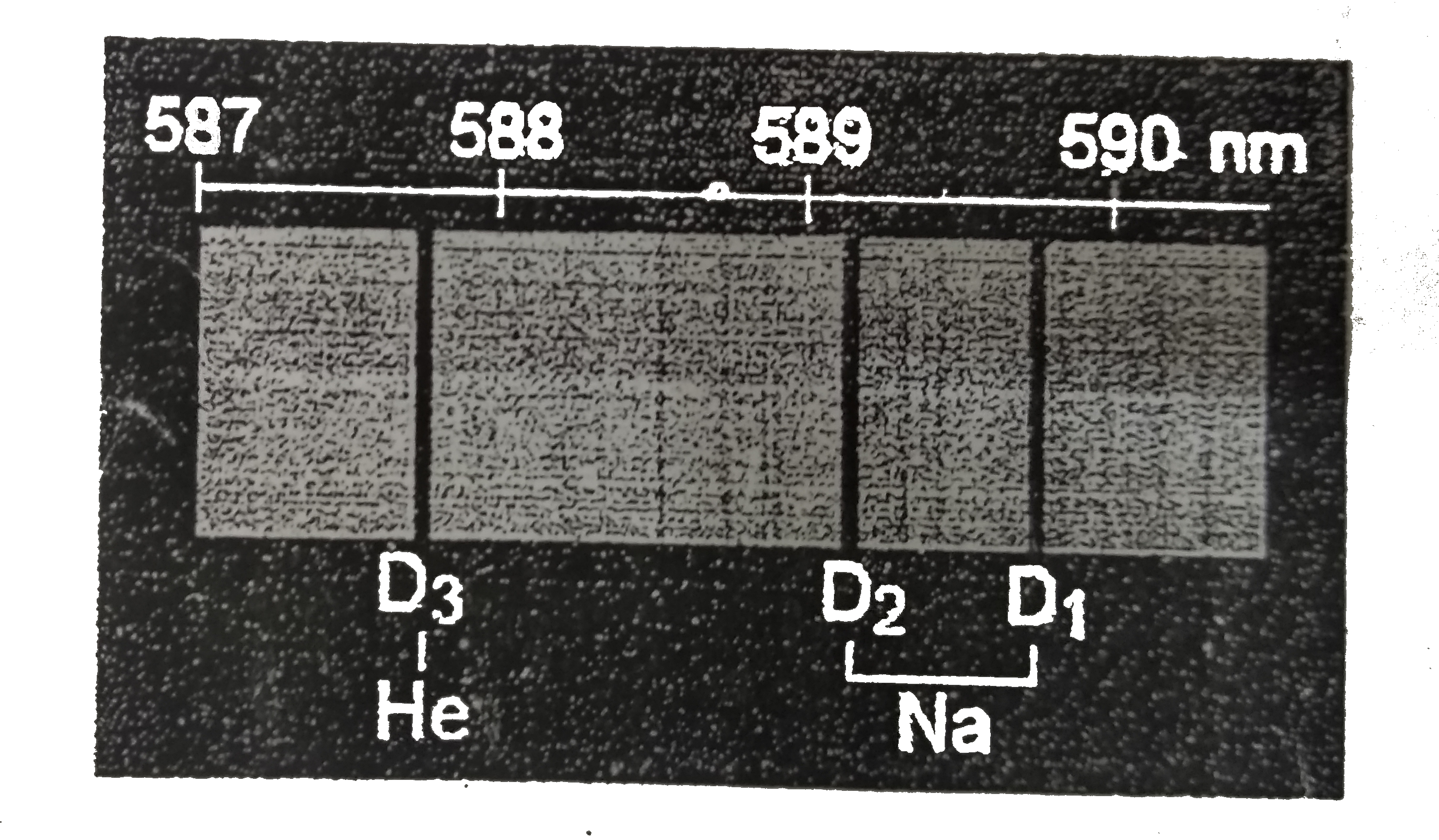Assume that impure copper contains only iron, silver and a gold as impurities. After passage of 140A, for 482.5 sec, of the mass of the anode decreased by 22.260g and the cathode increased in mass by 22.011g. Estimate the % iron and % copper originally present.
Cu=98.88%,Fe=0.85%
Cu=0.85%,Fe=98.88%
Cu=90%,Fe=10%
Cu=60%,Fe=40%
The correct Answer is:Cu=98.88%,Fe=0.85%
To solve the problem, we need to determine the percentage of copper and iron in the impure copper sample based on the given data. Here's a step-by-step breakdown of the solution:
Step 1: Calculate the total charge passed
We know that charge (Q) can be calculated using the formula:
Q=I×t
where:
- I=140A (current)
- t=482.5s (time)
Calculating the charge:
Q=140A×482.5s=67550C
Step 2: Convert charge to Faraday (F)
We know that 1 Faraday (F) is approximately 96500 C. Therefore, we can convert the charge to Faraday:
Charge in Faraday=Q96500=6755096500≈0.7F
Step 3: Determine the mass of copper deposited at the cathode
The mass of copper deposited at the cathode is given as:
Mass of copper deposited=22.011g
Step 4: Calculate the moles of copper deposited
Using the molar mass of copper (63.5 g/mol) and knowing that the reduction of copper involves 2 moles of electrons:
Moles of copper=massmolar mass=22.011g63.5g/mol≈0.346mol
Step 5: Calculate the Faraday used for copper
Using the formula:
Faraday=moles of copper×number of electrons
Faraday for copper=0.346mol×2≈0.692F
Step 6: Calculate the Faraday used for iron
The total Faraday used is 0.7 F, so the Faraday used for iron is:
Faraday for iron=0.7F−0.692F≈0.008F
Step 7: Calculate the mass of iron oxidized
Using the molar mass of iron (56 g/mol) and knowing that oxidation of iron involves 2 moles of electrons:
Weight of iron=Faraday for iron×molar mass of iron×12
Weight of iron=0.008F×56g/mol×12≈0.224g
Step 8: Calculate the percentage of iron
To find the percentage of iron in the original sample:
Percentage of iron=(Weight of ironTotal mass of anode loss)×100
Percentage of iron=(0.224g22.260g)×100≈1.01%
Step 9: Calculate the percentage of copper
The percentage of copper can be calculated as:
Percentage of copper=100%−Percentage of iron
Percentage of copper=100%−1.01%≈98.99%
Final Results:
- Percentage of copper: 98.99%
- Percentage of iron: 1.01%
We know that charge (Q) can be calculated using the formula:
Q=I×t
where:
- I=140A (current)
- t=482.5s (time)
Q=140A×482.5s=67550C
We know that 1 Faraday (F) is approximately 96500 C. Therefore, we can convert the charge to Faraday:
Charge in Faraday=Q96500=6755096500≈0.7F
The mass of copper deposited at the cathode is given as:
Mass of copper deposited=22.011g
Using the molar mass of copper (63.5 g/mol) and knowing that the reduction of copper involves 2 moles of electrons:
Moles of copper=massmolar mass=22.011g63.5g/mol≈0.346mol
Using the formula:
Faraday=moles of copper×number of electrons
Faraday for copper=0.346mol×2≈0.692F
The total Faraday used is 0.7 F, so the Faraday used for iron is:
Faraday for iron=0.7F−0.692F≈0.008F
Using the molar mass of iron (56 g/mol) and knowing that oxidation of iron involves 2 moles of electrons:
Weight of iron=Faraday for iron×molar mass of iron×12
Weight of iron=0.008F×56g/mol×12≈0.224g
To find the percentage of iron in the original sample:
Percentage of iron=(Weight of ironTotal mass of anode loss)×100
Percentage of iron=(0.224g22.260g)×100≈1.01%
The percentage of copper can be calculated as:
Percentage of copper=100%−Percentage of iron
Percentage of copper=100%−1.01%≈98.99%
- Percentage of copper: 98.99%
- Percentage of iron: 1.01%
Topper's Solved these Questions
- BOOK - ALLENCHAPTER - ELECTROCHEMISTRYEXERCISE - EXERCISE-05 [A]28videos
ELECTROCHEMISTRY
- BOOK - ALLENCHAPTER - ELECTROCHEMISTRYEXERCISE - EXERCISE -05 [B]38videos
ELECTROCHEMISTRY
- BOOK - ALLENCHAPTER - ELECTROCHEMISTRYEXERCISE - EXERCISE-04 [A]55videos
ELECTROCHEMISTRY
- BOOK - ALLENCHAPTER - CHEMISTRY AT A GLANCEEXERCISE - ORGANIC CHEMISTRY472videos
CHEMISTRY AT A GLANCE
- BOOK - ALLENCHAPTER - HYDROCARBONEXERCISE - MCQ15videos
HYDROCARBON
Similar Questions
A sample of impure cuprous oxide contains 66.67% copper, by ,mass. What is the percentage of pure Cu2O in the sample? (Cu=63.5)
View SolutionA complex of iron contains 45.6% iron by mass. Calculate the number of iron atoms present in 15.0 g of this complex.
View SolutionIn 1894, Lord Rayleigh reported that the mass of chemically prepared nitrogen was different from that of nitrogen extracted from the atmosphere, as shown in Tables 1 and 2. Latter, this difference was attributed to the presence of argon in atmospheric nitrogen. The masses of gases were mearsured by using a glass vessel with a known volume under atmospheric pressure (1.013×105Pa).
∣∣ ∣ ∣ ∣ ∣ ∣ ∣∣From nitric oxide2.3001gFrom nitrous oxide2.2990gFrom amonium nitrite purified at a red heat2.2987gFrom urea2.2985gFrom ammonium nitrite purified in the cold2.2987gMean2.2990g∣∣ ∣ ∣ ∣ ∣ ∣ ∣∣
∣∣ ∣ ∣ ∣∣O2was removed by hot copper(1892)2.3103gO2was removed by hot iron(1893)2.3100gO2wasremovedbyferroushydrate(1894)2.3102gMean2.3102g∣∣ ∣ ∣ ∣∣
Ramsay and cleve discovered helium in cleveite (a mineral consiting of uranium oxide and oxides of lead, thorium, and rare earths, an impure variety of uraninite) independently and virtually simultaneously in 1895. The gas extracted from the rock showed a unique spectroscopic line at around 588 nm (indicated by D3 in Figure 1), which was fist observed in the spectrum of solar prominence during a total eclipse in 1868, near the well-known D1 and D2 lines of sodium.

Identify––––––––– the transition relevant to the D3 line of helium among the transitions [A] to [E] indicated in Figure 2. Mark one of the following:
[A] [B] [C] [D] [E]View SolutionIn 1894, Lord Rayleigh reported that the mass of chemically prepared nitrogen was different from that of nitrogen extracted from the atmosphere, as shown in Tables 1 and 2. Latter, this difference was attributed to the presence of argon in atmospheric nitrogen. The masses of gases were mearsured by using a glass vessel with a known volume under atmospheric pressure (1.013×105Pa).
∣∣ ∣ ∣ ∣ ∣ ∣ ∣∣From nitric oxide2.3001gFrom nitrous oxide2.2990gFrom amonium nitrite purified at a red heat2.2987gFrom urea2.2985gFrom ammonium nitrite purified in the cold2.2987gMean2.2990g∣∣ ∣ ∣ ∣ ∣ ∣ ∣∣
∣∣ ∣ ∣ ∣∣O2was removed by hot copper(1892)2.3103gO2was removed by hot iron(1893)2.3100gO2wasremovedbyferroushydrate(1894)2.3102gMean2.3102g∣∣ ∣ ∣ ∣∣
Ramsay and cleve discovered helium in cleveite (a mineral consiting of uranium oxide and oxides of lead, thorium, and rare earths, an impure variety of uraninite) independently and virtually simultaneously in 1895. The gas extracted from the rock showed a unique spectroscopic line at around 588 nm (indicated by D3 in Figure 1), which was fist observed in the spectrum of solar prominence during a total eclipse in 1868, near the well-known D1 and D2 lines of sodium.

Which––––––– equation explains the occurrence of helium in cleveite among [A] to [D] below? Mark one.View SolutionAn alloy of gold and silver contains 38.5% silver by mass and has a density of 14.6g.mL−1. What is the molar concentration of silver in this alloy :
View Solution12.g of an impure sample of arsenious oxide was dissolved in water containing 7.5g of sodium bicarbonate and the resulting solution was diluted to 250mL. 25mL of this solution was completely oxidised by 22.4mL of a solution of iodine. 25mL of this iodine solution reacted with same volume of a solution containing 24.8g of sodium thiosulphate (Na2S2O3.5H2O) in one litre. Calculate teh percentage of arsenious oxide in the sample ( Atomic mass of As=74)
View SolutionA 5.0g sample of felspar containing Na2O,K2O and some inert impurity is dissolved in dilute HCl solution and NaCl and KCl formed are separated by fractional crystallization. During crystallization some less soluble impurities also come out. Mass of NaCl,KCl and impurity accompanying these salts was found to be 6.47g. Solid crystal was then re-dissolved and required 300mL of 0.3MAgNO3 for complete precipitation of chlorides. The precipitate this, obtained ws found to contain 4.23% insoluble impurity. Determine mass percentage of Na2O and K2O in the original sample:
View SolutionA silver coulometer is in series with a cell electrolyzing water. In a time of 1 minute at a constant current 1.08 g silver get deposited on the cathode of the coulometer. What total volume (in mL at 1atm, 273K) of the gases would have produced in other cell. In this cell that the anodic and cathodic efficiencies were 90% and 80% respectively. Assume the gases collected are dry. (Ag = 108) (molar volume of any ideal gas at 1atm and 273K = 22.4L)
View Solution0.10 g of a sample containing CuCO3 and some inert impurity was dissolved in dilute sulphuric acid and volume made up to 520 mL. This solution was added into 50mL of 0.04 M KI solution where copper precipitates as Cul and I− is oxidized into I−3. A 10 mL portion of this solution is taken for analysis, filtered and made up free I−3 and then treated with excess of acidic permanganate solution. Liberated iodine required 20 mL of 2.5 mM sodium thiosulphate solution to reach the end point.
Determine mass percentage of CuCO3 in the original sample.View Solution0.10g of a sample conining CuCo3 and some inert impurity was dissolved in dilute sulphuric acid and volume made up to 50mL. This solution was added into 50mL of 0.04MKI solution where copper precipitates as CuIandI− is oxidized into I−3. A 10mL portion of this solution is taken for analysis, filtered and made up free I−3 and then treated with excess of acidic permanganate solution. Liberated iodine required 20mL of 2.5mM sodium thiosulphate solution to reach the end point . Determine mass percentage of CuCO3 in the original sample.
View Solution

